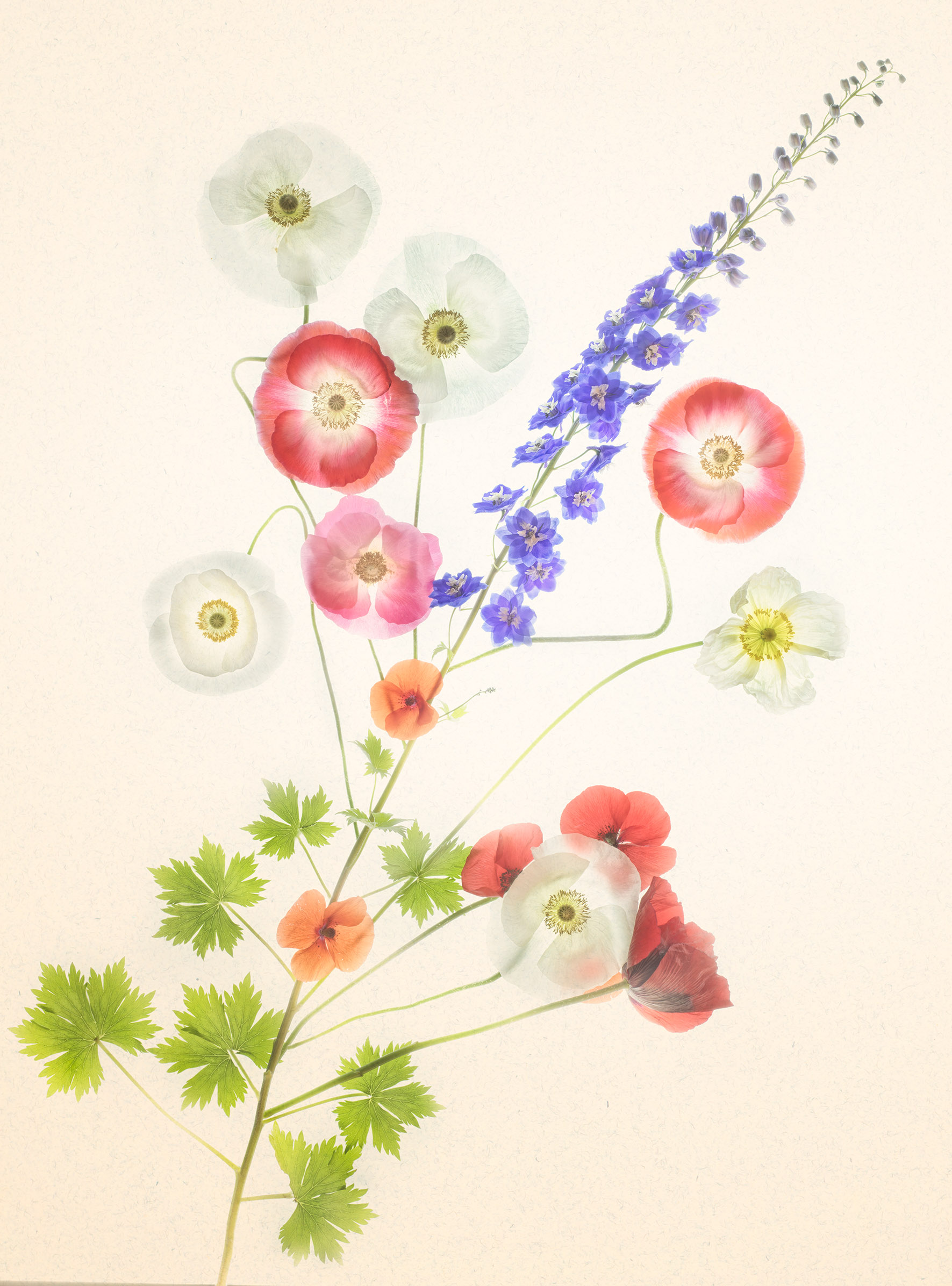Composition with Delphinium and Poppies is a good example showing one of the organizing principles I teach in my Photographing Flowers for Transparency workshop and my books. The first premise is that there needs to be an organizing principle in a light box image (or in any photograph, or any image, for that matter!).

Taking the idea that one needs a compositional organizational principle as a given, it is then possible to create a taxonomy of possibilities. These include roughly circular, spiral, color field, another kind of color field, horizontal panoramic view, vertical panoramic view, leading off the frame, crossing the frame, and more (an example of each is linked). I’ve even essayed a paint-splatter effect with flowers!
This image (the Composition with Delphinium and Poppies) epitomizes what is probably the most common botanical organization: relying on a single, unifying stalk, in this case the delphinium’s, underpinned by the distinctive delphinium green leaves. You can find many examples of this organizing principle in my work.
Of course, the poppies don’t really belong attached to the delphinium stalk, and for literal-minded folks who notice this might be a distraction. But for a general audience, from a compositional viewpoint, the literal truth of the real world doesn’t matter so long as the composition looks holistically plausible.
One other point is that this composition is built around a strong diagonal. The entire delphinium leads the eye up and out to the right of the frame. It is important in this style of composition to have directed movement of a portion of the composition that contrasts with the more static elements (the poppies). It’s also worth noting that I photographed the image with the delphinium pointing up and out to the left, and reversed the direction by flipping the image horizontally in post-production.
Pingback: White Peonies